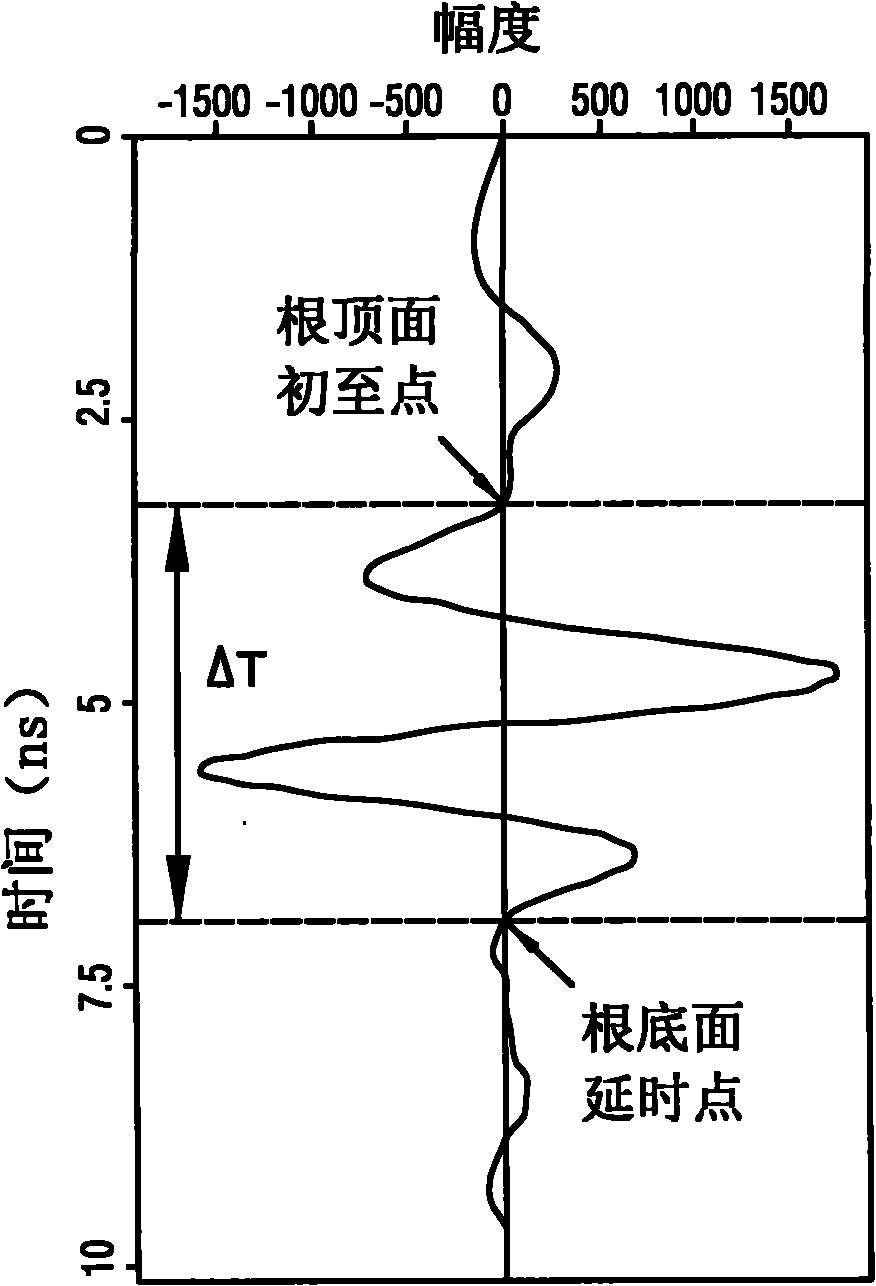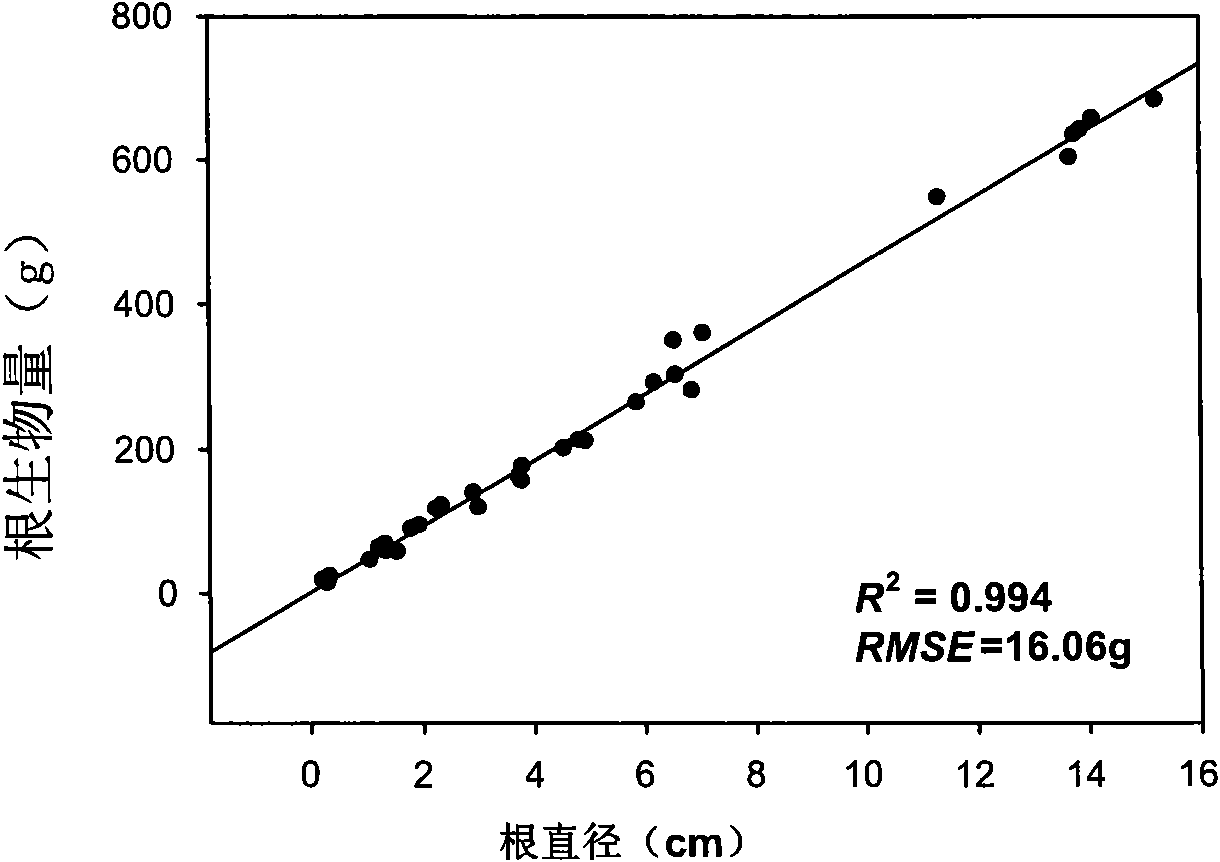Method for measuring diameter and biomass of plant underground roots by using ground penetrating radar
A ground-penetrating radar and underground root technology, which is applied in the field of measuring the diameter and biomass of plant underground roots, can solve the problems of unrecognizable, limited to qualitative mapping, and quantitative research has not been completely successful, and achieves the effect of strong correlation
- Summary
- Abstract
- Description
- Claims
- Application Information
AI Technical Summary
Problems solved by technology
Method used
Image
Examples
Embodiment 1
[0035] Embodiment 1 Measurement method
[0036] Studies have shown that there is a very clear linear relationship between the biomass of the underground roots of plants of the same length and the square value of the root diameter. Figure 2 shows the relationship between the square value of the root diameter and the biomass of the root, such as As shown in Figure 2, the square value of the root diameter and the coefficient of determination R of the biomass of the root 2 All reached above 0.99. Based on this, the present invention proposes a new method that can use GPR to measure the biomass of underground roots in practical application.
[0037] First, measure the root density of the root by collecting a small amount of root samples, and use GPR to measure the diameter at multiple positions of the root to obtain the average diameter of the root. At this time, it is assumed that the root is a cylinder, and then according to the measured root diameter (average diameter) and the...
Embodiment 2
[0052] Example 2 Measurement of characteristic constant K
[0053] As can be seen from Example 1, in the method for measuring the diameter of the underground root according to the present invention, the diameter D of the underground root of the plant is proportional to the time parameter ΔT, therefore, the corresponding value of the underground root of a certain plant in a certain area can be obtained by the following method The characteristic constant K, and then obtain the diameter of the underground root of the plant in the area. The specific method is as follows:
[0054] This underground root after measuring in embodiment 1 is dug out, and the diameter D of this underground root that measures digging out 1 , the specific time parameter ΔT of the actually measured underground root of the plant calculated according to the method in Example 1 1 , the characteristic constant K=D corresponding to the underground root can be obtained 1 / ΔT 1 .
[0055] That is to say, in t...
Embodiment 3
[0057] Embodiment 3 Verifies the correlation experiment of measuring diameter
[0058] Referring to FIG. 6 , this embodiment shows the correlation diagram between the time parameter ΔT obtained by detecting underground roots at different depths and the actual root diameter, wherein the frequency of the corresponding radar wave is 2 GHz.
[0059] As shown in Figure 6, the correlation analysis results of the time parameter ΔT and the actual root diameter show that there is a very significant correlation between ΔT and the actual root diameter, and the coefficient of determination R 2 The value of 0.868, the root mean square error (RMSE) is 3.816mm.
[0060] What Fig. 7 shows is the relationship diagram between the estimated root diameter value and its actual root diameter obtained by using the time parameter ΔT obtained by detecting another group of root diameters and the characteristic constant K obtained in Fig. 6, as shown in Fig. 7, from The similarity between the estimated...
PUM
 Login to View More
Login to View More Abstract
Description
Claims
Application Information
 Login to View More
Login to View More - R&D
- Intellectual Property
- Life Sciences
- Materials
- Tech Scout
- Unparalleled Data Quality
- Higher Quality Content
- 60% Fewer Hallucinations
Browse by: Latest US Patents, China's latest patents, Technical Efficacy Thesaurus, Application Domain, Technology Topic, Popular Technical Reports.
© 2025 PatSnap. All rights reserved.Legal|Privacy policy|Modern Slavery Act Transparency Statement|Sitemap|About US| Contact US: help@patsnap.com



